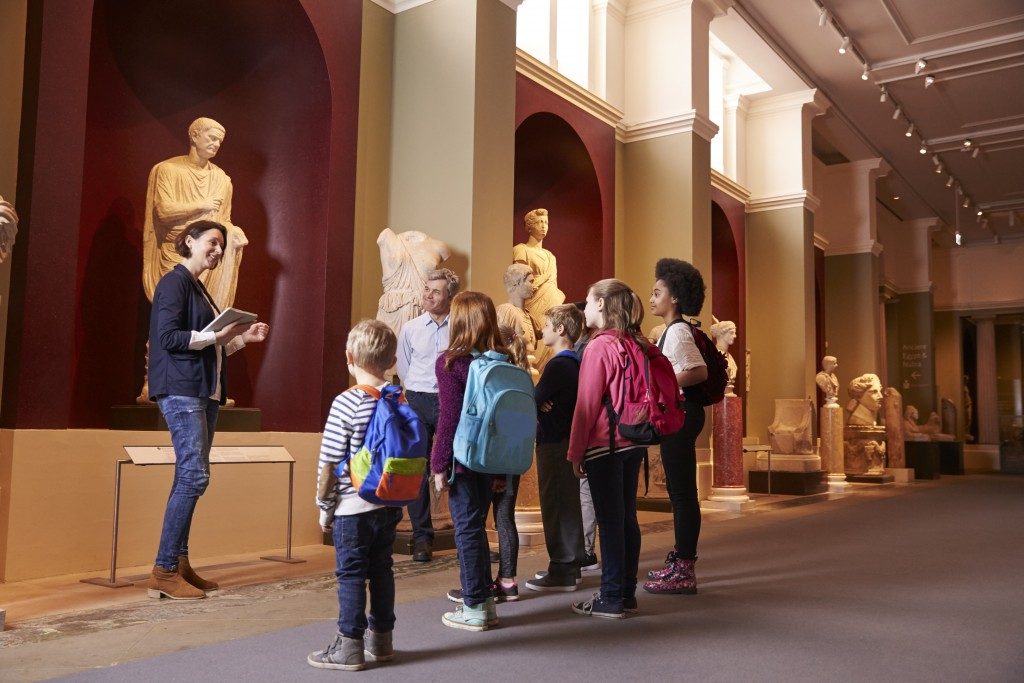Museums can help shape a child’s interests so that they grow up well-rounded. You should consider finding a place or property where your kid has easy access to them. If you live in a district along or near the River Thames such as Putney, estate agents should help you find one. It can be supplemental to their education. While you’re at it, why not check these museums out. They might pique your interest.
HMS Belfast
This ship used to serve the Royal Navy as one of its town-class light cruisers. It launched on March 17, 1938 and was decommissioned on August 24, 1963. In 1971, it was made into a museum ship and now moored on the River Thames near The Queen’s Walk.
HMS Belfast is one of the many war museums that you can find in London. What’s unique about it is that the ship itself is the attraction. Visitors are in for an immersive experience. There are many posters with information about the rooms and equipment. Part of the thrill is navigating the cramped interiors. Wax figures and ambient sound effects depict various scenes. Among them are people preparing food in the kitchen and patients receiving care in the infirmary. The ship’s exterior can be explored, too. Here, you can see how massive its guns and turrets are.
When you reach the punishment cells, you will experience a tonal shift toward being creepy and surreal. The dark and empty cells are a stark contrast to the more densely-packed areas of the ship. Another highlight is seeing the compass platform or the bridge. Rows of dials and gauges, complete with a working radar, greet you. Only seasoned navigators could understand how all this works.
HMS Belfast offers an immersive and interactive experience. You will truly feel what it’s like to be a sailor in this museum.
Grant Museum of Zoology and Comparative Anatomy
Robert Edmond Grant was an anatomist and zoologist who served as the first curator of the museum. He was also the first zoology professor at University College London. The first specimens were from Grant’s own collection. Later, samples from his students, other known zoologists, and universities were added.
There are about 68,000 specimens housed in the museum. During the museum’s early days, the collection grew rapidly. Some specimens were not documented properly. It’s possible to look into the earlier specimens and find species that are not discovered yet. Specimens of extinct animals are also seen here.
Of note are the full skeleton of the dodo, an extinct bird, and the quagga, a mammal that resembles the zebra. You can also find oddities and curiosities. If you have ever wondered what a jar of moles looks like, check it out in this museum.
Jeremy Bentham Auto-Icon

Jeremy Bentham is known as the father of utilitarianism. He was a philosopher best known for his views on the human’s moral characteristics.
Bentham had wished to have his body preserved upon his death and made into an auto-icon or self-image. The reason was that he wanted to be around his friends after death if they felt that they were missing him.
He also specified the method in which he wanted to be preserved. This proved to be disastrous for his head. It looked macabre, and it was decided not to display it. It was kept in its own container and placed beneath his feet. A wax head with some of his own hair became its replacement.
The story with his head gets crazier. It was stolen in 1975 by students from King’s College who then demanded a ransom for it, which is to be paid to charity. It was eventually retrieved and since then was kept in an undisclosed location so that it wouldn’t get into trouble again.
Museums are gateways to our past; they are places where one’s heritage can be seen. Visiting them is a good way to remind ourselves how far we’ve come as a society. So go ahead and visit a museum near you. You might learn something about yourself.

